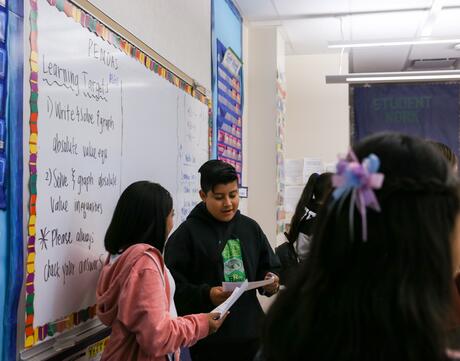
Exploring Identity and Belonging through Poetry
At a Glance
Language
English — USSubject
- English & Language Arts
Grade
7–8Duration
One 50-min class period- Culture & Identity
Overview
About This Lesson
Whether it’s deciding where to sit, whether or not to raise their hand, which clothes to wear, or which post to like, the students in your classroom negotiate belonging on a daily basis in real life and online. Questions like “Who am I?” and “Where do I belong?” are at the forefront of their minds. Inviting students to examine who they are and the forces that shape their sense of belonging can feel relevant and engaging to them, especially when they have opportunities to draw connections between what they learn in school and their own lives.
With these ideas in mind, this lesson introduces the concepts that students will explore throughout this text set. Through a choral reading of a poem and personal reflection, students will have opportunities to connect their experiences to the text in order to consider the factors that shape their sense of belonging in the spaces they occupy and the choices they make to fit in or stand out.
Preparing to Teach
A Note to Teachers
Before teaching this lesson, please review the following information to help guide your preparation process.
Lesson Plans
Activities
Materials and Downloads
Quick Downloads
Download the Files
Download allGet Files Via Google
Exploring Identity and Belonging through Poetry
From Fitting In to Belonging: Text Set Overview
Identifying and Affirming Core Values
Additional Resources
Unlimited Access to Learning. More Added Every Month.
Facing History & Ourselves is designed for educators who want to help students explore identity, think critically, grow emotionally, act ethically, and participate in civic life. It’s hard work, so we’ve developed some go-to professional learning opportunities to help you along the way.
Exploring ELA Text Selection with Julia Torres
On-Demand

Working for Justice, Equity and Civic Agency in Our Schools: A Conversation with Clint Smith
On-Demand

Centering Student Voices to Build Community and Agency
On-Demand
















